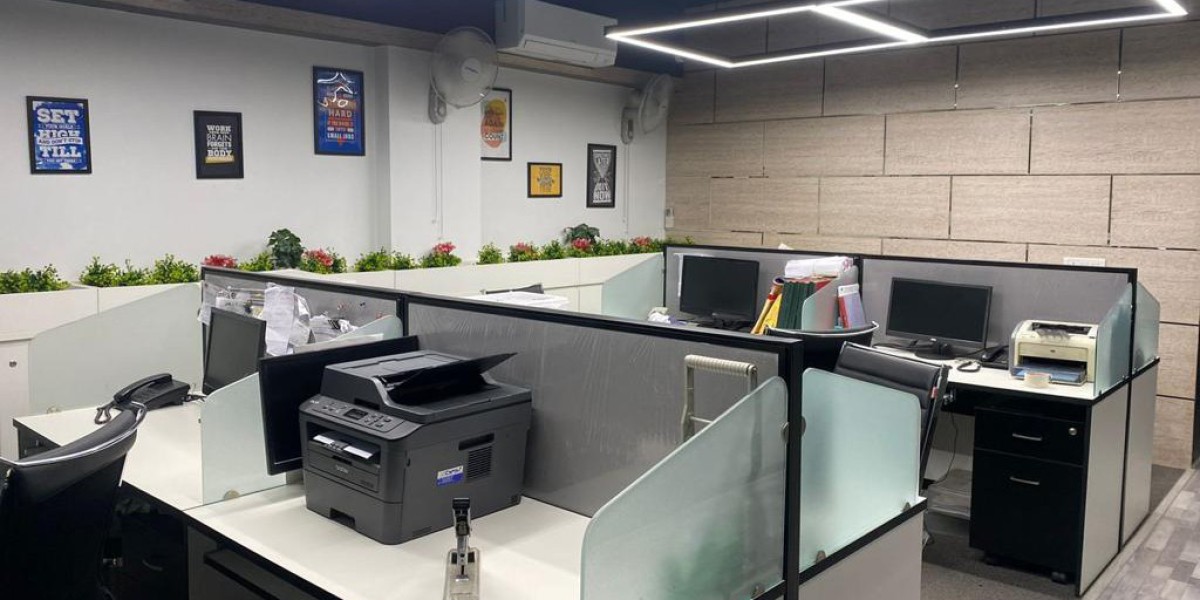The metals market is an essential part of the global economy, directly impacting industries from manufacturing and technology to finance and infrastructure. Given the unpredictable nature of metals commodity prices, companies and investors alike are constantly seeking reliable ways to forecast price trends. But in a market where prices fluctuate daily due to countless variables, are metal rates truly predictable? Advances in commodity AI provide a promising solution, leveraging data and machine learning (ML) to improve predictions for metals commodity prices, metal future prices, and general market behavior. This blog explores how AI is reshaping the world of metal rate forecasting, the challenges it faces, and what the future might hold.
The Complexity of Predicting Metal Rates
Factors Influencing Metal Prices
Metals such as gold, silver, copper, and aluminum hold significant value due to their diverse industrial uses and status as commodities. However, the prices of these metals are subject to a myriad of influences, from economic conditions and trade policies to shifts in supply and demand. Key factors that affect metal rates include:
- Global economic conditions: The strength of economies worldwide affects metal demand. Economic booms often drive up metal consumption, whereas recessions can lower demand, resulting in price drops.
- Supply chain stability: Events such as mine shutdowns, logistical delays, or changes in production capacity can disrupt supply chains and, consequently, influence prices.
- Geopolitical events: Trade wars, sanctions, and tariffs can impact metals commodity prices. For example, tariffs on imported metals may drive up domestic prices, while increased exports can reduce global availability.
- Environmental and regulatory policies: Governments worldwide have introduced regulations on mining and waste, and these policies can directly impact production costs and, subsequently, the cost of metals.
Given the number of variables, accurately forecasting metals commodity prices has been notoriously challenging using traditional methods, which often rely on historical data alone and overlook the complexity of real-time events.
Traditional Forecasting vs. AI-Driven Approaches
Traditional forecasting models use historical data and regression analyses to predict metal rates. While these approaches provide a baseline, they often lack adaptability and fail to capture dynamic changes in the global market. AI-driven models, on the other hand, employ machine learning and advanced analytics to simultaneously process multiple data sources in real time, improving the accuracy of predictions for metals commodity prices.
How Commodity AI Transforms Metal Rate Predictions
Data-Driven Insights with AI Models
AI models can sift through vast amounts of data at speeds and accuracies unattainable by human analysts. By analyzing historical price data, market news, production levels, and even social media sentiment, AI enables a more comprehensive view of the factors impacting metal future prices. Some of the primary data sources AI uses for price prediction include:
- Historical price trends
- Industry news and global reports
- Supply and demand forecasts
- Real-time trading data
- Economic indicators
By considering these inputs, AI models offer real-time insights and predictions, making metal rate forecasts more robust and reflective of the latest market dynamics.
Advanced Machine Learning Techniques
Machine learning (ML) is at the heart of commodity AI’s ability to predict metal rates. Through methods like time series forecasting, regression analysis, and recurrent neural networks (RNNs), ML algorithms can detect subtle patterns that indicate potential future price movements. RNNs, for instance, are particularly adept at identifying cyclical trends in metal rate data, as they "remember" information from previous inputs, making them ideal for time-based predictions.
Risk Analysis and Forecast Adjustments
Commodity AI doesn’t just generate a single prediction; it can also assess potential risks associated with different scenarios. For example, if a major geopolitical event occurs, the AI model can adjust metal rate forecasts based on similar historical events. This capacity for risk assessment helps investors and businesses make informed decisions by offering not only price forecasts but also the probability and potential impact of various risk factors.
Benefits of Using Commodity AI for Metal Rate Predictions
- Improved Accuracy and Reliability
Traditional forecasting methods often fall short in accuracy due to the limited number of variables they consider. By integrating a wider range of data sources, AI-driven models provide a clearer, more objective perspective on metals commodity prices. For example, rather than relying solely on past prices, AI considers how current events, industry trends, and global economic conditions might affect metal rates.
- Real-Time Updates on Metal Rate Fluctuations
Markets are fast-paced, and metal rates can shift within minutes based on news or economic changes. One major benefit of commodity AI is its ability to update predictions in real-time. Unlike traditional models that require extensive recalculations, AI-driven forecasts adapt on the fly, providing timely insights for traders, investors, and corporations that need to respond quickly to market shifts.
- Enhanced Decision-Making for Businesses and Investors
For corporations and investors, accurate metal rate predictions are essential for making informed purchasing and investment decisions. AI-powered models offer real-time insights into metals commodity prices and future trends, enabling businesses to buy or hedge metal assets at the most favorable times, thus reducing risks and maximizing returns.
Challenges in Using AI for Predicting Metal Rates
- Data Quality and Integration
One of the biggest obstacles in AI forecasting is ensuring access to high-quality, up-to-date data. While AI models excel at interpreting large datasets, inaccurate or delayed information can distort predictions, affecting metal future prices and leading to unreliable forecasts. Ensuring consistent data quality and efficient integration from multiple sources is essential for accurate AI-driven predictions.
- Complexity in Modeling External Events
Despite its advantages, AI remains limited in its ability to predict random, high-impact events such as natural disasters or political crises, which can disrupt the metals market unpredictably. Although some algorithms account for historical examples of similar events, the timing and specifics of such occurrences remain challenging to predict.
Real-World Applications of Commodity AI in the Metals Market
- Mining Companies and Production Optimization
Mining companies benefit significantly from AI-driven insights, as these predictions help them determine optimal extraction levels and production timelines based on anticipated metal rate changes. With accurate metals commodity prices forecasts, these companies can align their output to meet demand while reducing operational costs.
- Traders and Investors in Commodity Markets
Commodity traders and investors are some of the most enthusiastic adopters of AI forecasting tools. By providing predictive insights into metal future prices, AI enables them to make quick decisions on buying, selling, or holding assets based on projected price shifts. This capability is essential for maintaining a competitive edge in fast-moving markets, where real-time information is invaluable.
- Manufacturers and Supply Chain Optimization
Manufacturers who rely on metals for production are also adopting AI insights to improve supply chain efficiency. If metal rates are predicted to rise, manufacturers can adjust their purchasing strategy to buy metals in advance, potentially securing lower prices and avoiding cost spikes.
Choosing the Right Commodity AI Solution
With various AI-driven solutions available, companies need to select tools that align with their forecasting needs. Considerations include:
- Data integration capabilities: The ability to pull data from multiple sources (e.g., news, financial markets, and social media) allows the AI to provide more accurate insights on metals commodity prices.
- Customizability: A customizable AI model enables businesses to focus on specific metals, regions, or market conditions, yielding more relevant insights for tailored decision-making.
- Scalability: The best AI solutions are scalable, meaning they can handle growing data volumes and increasingly complex analyses as business needs evolve.
Choosing a solution with these features can make a significant difference in obtaining actionable insights that drive profitable decisions.
The Future of Metal Rate Prediction with AI
- Advancements in Machine Learning Algorithms
Machine learning algorithms are continuously evolving, becoming better equipped to identify intricate patterns in complex data. As technology advances, these algorithms will likely improve their ability to predict metal rates by incorporating new, more sophisticated forms of data analysis, such as reinforcement learning or hybrid models that combine multiple forecasting techniques.
- Development of AI-Driven Investment Platforms
In the near future, AI-powered investment platforms tailored to commodity markets may become commonplace. These platforms will offer more personalized recommendations for individual investors and institutional clients, with algorithms considering each user’s investment goals, risk tolerance, and market conditions to optimize metal investments.
Conclusion
The ability to predict metals commodity prices and future metal rates using AI represents a major advancement in the commodities market. By providing data-driven insights and adapting to real-time market conditions, commodity AI offers businesses and investors more reliable tools for navigating an unpredictable sector.
As machine learning technology and data collection capabilities continue to advance, the future of metal rate prediction looks increasingly promising. By adopting AI-driven solutions, companies can better manage risks, optimize operations, and make informed, strategic decisions in a volatile market. Embracing AI as a forecasting tool may very well shape the future of metal commodity markets, transforming how stakeholders understand, interpret, and respond to price movements on a global scale.
To Get Real-Time Price of Commodity Visit: https://pricevision.ai
Source: https://diigo.com/0xwugm



